Knee Ligament Rehabilitation Tools: Advanced Knee Rehabilitation using Arthrometers
Explore the revolutionary GNRB & DyneeLax knee ligament rehabilitation tools that are transforming the diagnosis and prevention of knee ligament injuries. Our comprehensive guide delves into the applications, benefits, and case studies showcasing these arthrometers' efficacy in early detection and personalized preventive care. Designed for orthopedic surgeons, radiologists, sports medicine doctors, and physical therapists, this resource empowers healthcare professionals to enhance patient outcomes through innovative technology.
Introduction
Navigating the landscape of knee ligament rehabilitation necessitates not only expertise but also innovation and precision. Restoring an individual's mobility and strength after a knee injury is an endeavor of paramount importance in orthopedics and sports medicine. Traditional diagnostic tools such as Magnetic Resonance Imaging (MRI) have long been cornerstones in evaluating knee injuries, but the quest for excellence and enhanced patient outcomes compels us to seek advancements beyond the conventional.
Introducing the GNRB & Dyneelax arthrometers – pioneering instruments meticulously crafted to redefine the boundaries of diagnostic accuracy and rehabilitation efficacy. These arthrometers stand as a testament to technological innovation, delivering unparalleled sensitivity in identifying partial Anterior Cruciate Ligament (ACL) ruptures, even outperforming the capabilities of MRI.
In this section, we delve into the transformative potential of the GNRB & Dyneelax arthrometers. Their integration into rehabilitation strategies signifies a leap forward, promising a confluence of precision and personalized care. For orthopedic surgeons, radiologists, sports medicine doctors, and physical therapists, these tools not only represent progress but also inspire a renewed commitment to patient recovery and well-being.
Embrace the future of knee ligament rehabilitation. Let's explore how the GNRB & Dyneelax arthrometers can elevate your practice and catalyze a new era of healing and recovery.
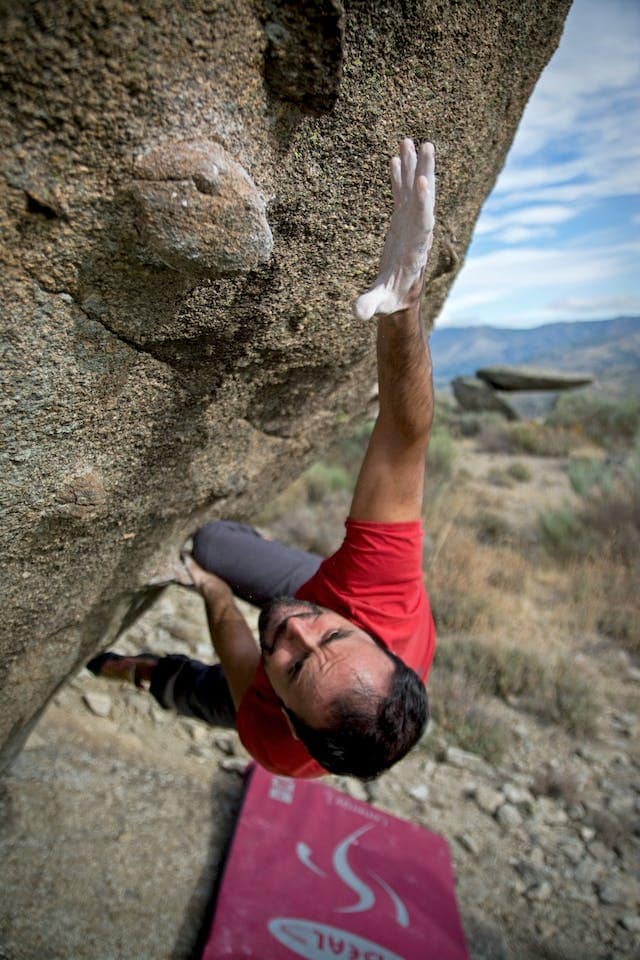
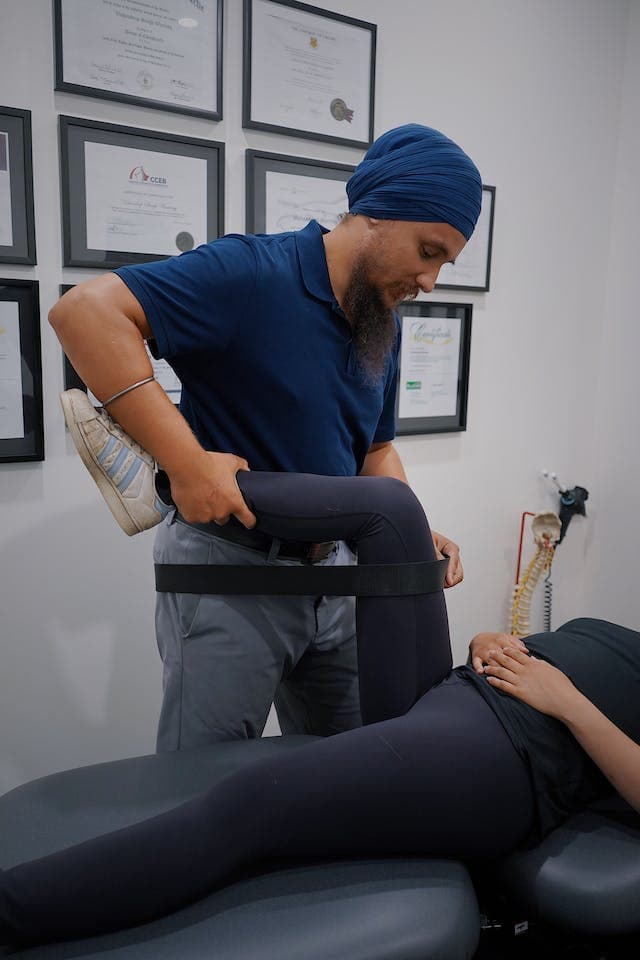
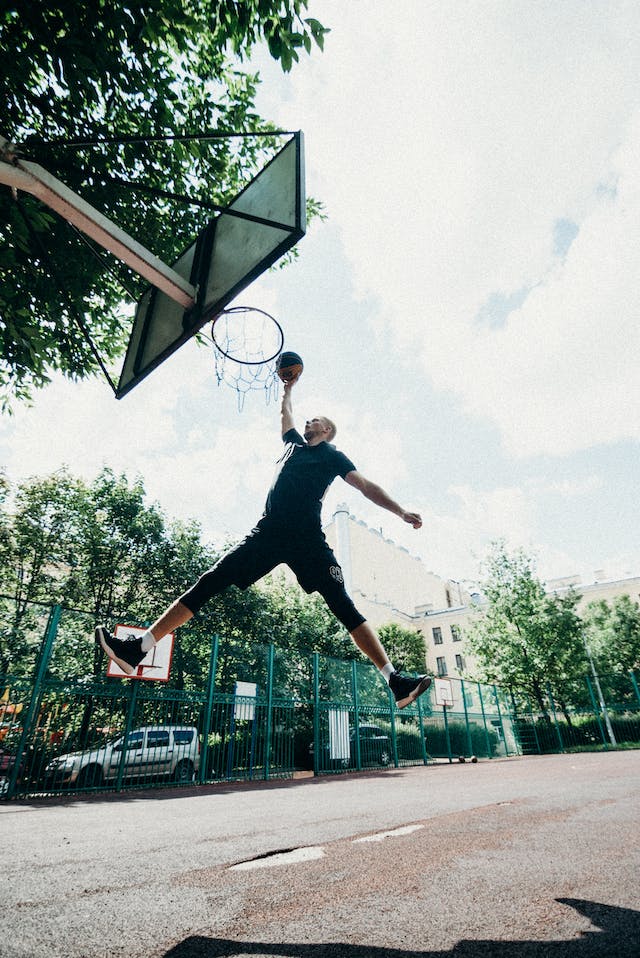


Decoding Knee Ligament Injuries: Types and Rehabilitation Challenges
Knee ligament injuries are commonplace in both athletic and non-athletic populations, resulting from factors such as trauma, overuse, or degeneration. The knee comprises four major ligaments, each vulnerable to varying degrees of strain and injury:
Types of Injuries:
Anterior Cruciate Ligament (ACL):
Positioned in the center of the knee, the ACL is often subjected to tears or sprains during sudden stops or changes in direction.
Posterior Cruciate Ligament (PCL):
The PCL, located at the back of the knee, is typically injured due to direct impact, such as a car accident or a fall.
Medial Collateral Ligament (MCL):
Running along the inner knee, the MCL can be stretched or torn when the outer knee is forcefully struck.
Lateral Collateral Ligament (LCL):
The LCL, situated on the outer knee, is less commonly injured but can be affected during direct trauma to the inner knee.
Challenges in Rehabilitation:
Rehabilitation of knee ligament injuries demands nuanced understanding and precision, given the structural complexity of the knee joint. Several challenges pervade the rehabilitation process:
Accurate Diagnosis
Detecting partial tears, especially in the ACL, can be elusive, leading to potentially suboptimal treatment plans.
Patient Compliance
Adherence to prescribed rehabilitation exercises is critical but often varies among patients.
Monitoring Progress
Traditional methods may fall short in continuously tracking the healing process, making it challenging to adapt rehabilitation plans promptly.
Risk of Re-Injury
Insufficient recovery or premature return to activity can heighten the risk of subsequent injuries.
The Role of GNRB & Dyneelax in Rehabilitation
Advanced Knee Ligament Rehabilitation Tools
Embarking on the path to recovery from knee ligament injuries necessitates precision, adaptability, and innovation. GNRB & Dyneelax arthrometers emerge as transformative tools that redefine the rehabilitation landscape. Seamlessly merging diagnostic accuracy with versatile treatment approaches, these groundbreaking arthrometers stand as symbols of pioneering progress. Dive into an exploration of how GNRB & Dyneelax chart new pathways in patient-centric rehabilitation and shape the future of orthopedic care.
In essence, the GNRB & Dyneelax arthrometers are not just diagnostic tools but rather indispensable allies in the quest for optimal rehabilitation. By ensuring precision, facilitating early intervention, and enabling adaptable and comprehensive rehabilitation plans, they empower healthcare professionals to redefine the standards of care in knee ligament recovery.
Simply walking applies 350N on the ACL (Click Here to Download Nagura - 2006 Study), it is therefore perfectly safe to perform a test (100N Max Push) with our motorized arthrometers as soons as 6 weeks after surgery (Do not do this with a manual arthrometer)!
Precision and Accuracy:
The GNRB & Dyneelax arthrometers are designed to bring a new level of precision and accuracy to the diagnosis and rehabilitation of knee ligament injuries. Through objective and quantitative measurements of knee laxity, these tools help clinicians identify even the most subtle changes in ligament stability. By accurately assessing the extent of injury, healthcare professionals can devise rehabilitation plans that are meticulously tailored to the specific needs of the patient.
Early Detection:
One of the groundbreaking features of the GNRB & Dyneelax arthrometers is their heightened sensitivity in detecting partial ACL ruptures, a feat often challenging for traditional MRI scans. Early and precise detection is crucial in mapping out an effective rehabilitation strategy. By identifying the nuances of each injury, these arthrometers enable clinicians to intervene promptly, thereby optimizing recovery timelines and outcomes.
Adaptable Rehabilitation Plans:
The data procured by the GNRB & Dyneelax arthrometers serves as a cornerstone for crafting adaptable and dynamic rehabilitation plans. Real-time feedback on knee laxity allows for continuous monitoring and adjustment of therapeutic interventions. Whether it's modifying exercise intensity or altering the focus of therapy, these arthrometers facilitate informed decision-making throughout the rehabilitation journey.
Comprehensive Assessment:
Beyond diagnosing and monitoring, the GNRB & Dyneelax arthrometers provide a comprehensive assessment of the knee's functional state. By evaluating not only the injured ligament but also the overall stability and biomechanics of the knee, they foster a holistic approach to rehabilitation. This comprehensive view ensures that all facets of recovery are addressed, laying the groundwork for a successful and sustainable return to function.
Interested in exploring a rehabilitation program utilizing knee motorized arthrometers?
Together, We Achieve
Harness the power of arthrometers in your recovery journey. Accuracy in measurement, precision in healing.
Benefits in Rehabilitation
Enhanced Diagnostic Accuracy
GNRB & Dyneelax arthrometers bring unparalleled diagnostic precision, adeptly identifying even partial ACL ruptures. This ensures a comprehensive understanding of knee injuries from the onset of rehabilitation.
Personalized Treatment Plans
Utilizing data from GNRB & Dyneelax, healthcare professionals can create tailored rehabilitation programs. These personalized plans optimize recovery and minimize the risk of re-injury.
Objective Monitoring & Progress Tracking
These arthrometers facilitate real-time, objective monitoring of knee laxity. This continuous assessment allows for timely adjustments to the rehabilitation plan, aligning interventions with patient needs.
Cost-Effective & Time-Efficient
The integration of GNRB & Dyneelax in rehabilitation can reduce both duration and costs associated with recovery, proving beneficial for healthcare providers and patients alike.
Improved Patient Outcomes
GNRB & Dyneelax contribute to improved patient outcomes by ensuring that therapeutic interventions are precise, timely, and responsive, enhancing the chances of a full recovery.
Holistic Approach & Boosted Patient Confidence
GNRB & Dyneelax provide a comprehensive assessment of knee biomechanics, ensuring a holistic approach to recovery. Additionally, the precision and personalization these tools offer boost patient confidence during rehabilitation.
Applications in Practice
In essence, the applications of GNRB & Dyneelax arthrometers span a wide spectrum of clinical and research settings, reaffirming their versatility and indispensability in modern orthopedic and sports medicine practices.
Preoperative Evaluation
Before undergoing surgery for a knee ligament injury, GNRB & Dyneelax arthrometers can be employed to gain a detailed and quantitative assessment of the knee’s stability. This data aids surgeons in making informed decisions regarding surgical approaches and planning.
Postoperative Monitoring
Following surgery, these arthrometers can be invaluable in tracking the recovery progress. By regularly measuring knee laxity, healthcare professionals can assess the effectiveness of surgical interventions and adapt postoperative care plans as necessary.
Injury Prevention Programs
In sports medicine and athletic training, GNRB & Dyneelax arthrometers can be instrumental in identifying athletes at risk of knee ligament injuries. By assessing knee stability, tailored injury prevention programs can be developed to enhance athletic performance and minimize downtime.
Rehabilitation Centers
Physical therapists and rehabilitation specialists can integrate GNRB & Dyneelax into their practices to monitor the progress of patients undergoing rehabilitation. The real-time data allows for adjustments to exercise regimens, ensuring optimal recovery.
Radiology Suites
Radiologists can use GNRB & Dyneelax arthrometers as complementary tools alongside imaging techniques. These arthrometers provide functional information about knee stability, enriching the diagnostic data obtained through imaging.
Sports Teams and Athletic Departments
Sports medicine doctors working with athletes can use GNRB & Dyneelax to monitor players’ knee health regularly. Early detection of potential issues allows for timely intervention, ensuring athletes remain at the peak of their performance.
Research and Clinical Studies
Researchers conducting studies on knee ligament injuries and their treatment can utilize GNRB & Dyneelax for collecting quantitative data. These arthrometers facilitate standardized measurements, contributing to the reliability and reproducibility of research findings.
Educational and Training Institutions
Medical and physiotherapy educational institutions can incorporate GNRB & Dyneelax arthrometers into their curriculum, offering students hands-on experience with advanced diagnostic tools.
Who Should Use Dyneelax & GNRB?
Benefits for Each Professional:

DOI: 10.24966/ORP-2052/100035

DOI: 10.1016/j.knee.2023.03.017
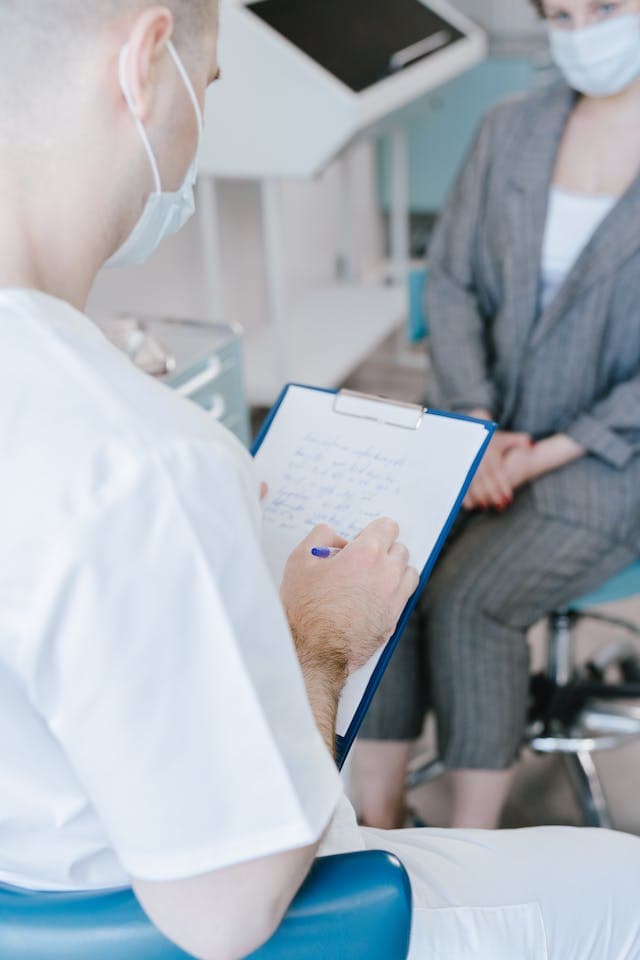
DOI: 10.1016/j.medntd.2023.100254
Don’t just take our word for it
Testimonials
To all users and those interested in the GNRB devices designed and patented by the Genourob Company.
Over the last 4 years, we have been intensively working the new method of Automatic Dynamic Laximetry, LDA, with its device the GNRB.
In addition to providing a state analysis of the state of the Anterior Cruciate Ligament (ACL) GNRB Gives a functional analysis as well.
So With the GNRB it’s possible to have a Dynamic Analysis of the stiffness of the ACL pre-surgery and of the graft post-surgery. It is useful in post-op follow-up for the graft Ligamentization assessment, and therefore a good indicator of the stability of the Knee.
The device is effective, reliable and easy to use and assists to improve diagnosis and treatment of the ACL injuries.
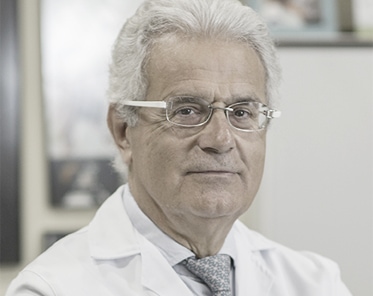
The main interest of this tool (but not the only one) in public health is to allow primary care doctors, and especially emergency physicians, to categorize knee sprains urgently, thanks to a simple-to-use tool in just a few minutes. This classification from the first consultation into a severe sprain (with ACL rupture) or mild (without ACL rupture) allows, on one hand, to avoid unnecessary and costly additional examinations (MRI) in the case of mild sprains, and on the other hand, to immediately adapt treatment to the severity of the sprain, avoiding, for example, unnecessary prolonged immobilizations.
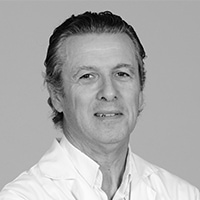
I the undersigned, Doctor Henri ROBERT, Knee ACL surgeon specialist, confirm that the GNRB, ROTAM & DYNEELAX arthrometers are very accurate, reliable and with the best reproducibility in the world.
The arrival of the DYNEELAX revolutionizes the possibilities of the practitioner to regularly analyse the rotational and translational stabilities of the cruciate ligaments in the knee, using a non-invasive test, before and after surgery or as a preventive measure, or after partial tears. Numerous additional applications include notably the analysis of meniscus lesions (medial or lateral) which can be highlighted thanks to the rotational tests, as well as the functional analysis of the strength of the injured tissues.
The rotational analysis is an essential breakthrough as it allows the identification of rotational instabilities which are very difficult to detect with known clinical physical tests (pivot shift test, the Dejour test, dial test...). The DYNEELAX is the result of more than fifteen years of research and development which has led to the most advanced device in this field of study on an international level.
It is essential for surgeons to know the results of rotatory tests in order to adapt ACL surgery and perform or not an extra-articular tenodesis.
As much as translational stability could be controlled manually or with small manual laximetry tools, rotation has no suitable tool to validate this (nor any reliable clinical test due to the absence of relaxation necessary to carry out these tests properly).
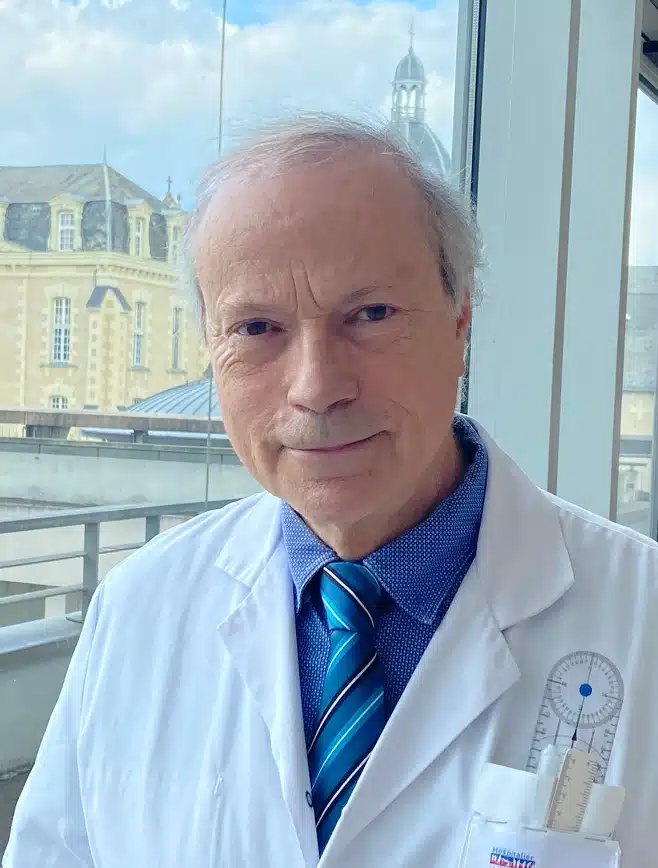
This is a letter detailing my/our experience with use of the Genourob Dyneelax laximeter device.
We are a high volume tertiary referral arthroplasty centre and sports medicine centre in Western Australia. We are closely associated with the Orthopaedic Research Foundation of Western Australia.
We have had an excellent experience with the use of our Dyneelax device for multiple research projects, including novel investigation of the sagittal stability of total knee replacements and revision total knee replacements. We also have numerous projects working towards examining the stability of anterior cruciate multi-ligament knee reconstructions.
Our experience working with the company has been excellent. We are literally located on the other side of the world; however, they have gone over and above to help us with training and our customer support. I cannot recommend them highly enough.
In terms of the device, it is an excellent research tool which enables us to establish quantified measurement of the sagittal and rotational stability of multiple different knee arthroplasty devices, a measurement that hereto forth was impossible. This is generating high level novel research of an international interest.

My name is Michael Rüscher, I work in the field of conservative and operative orthopaedics as an osteopath and physiotherapist! I am currently working intensively on my PHD dissertation in the field of biomechanics.
I discovered the device Dyneelax from the company Genourob in the course of my research about 1 year ago and the idea was born to write the dissertation with this laximetry on the knee joint. I have now taken over 100 measurements on operated and conservative cruciate ligaments and am thrilled with the measurement method. It is simple and very reliable to use.
In my daily work with my brother Dr. Rudolf Rüscher we evaluate the cruciate ligaments by means of MRI and immediate laximetry.
We have already had 3 patients with a described complete cruciate ligament rupture who then showed no clear instability in the laximetry measurement, i.e. less than 1.5 mm at 100 Micro Newton. So we are excited about this functional study of this laximetry.
The topic of my dissertation is "Comparative investigation of the biomechanics (laximetry by Genourob) of the knee joint with rupture of the anterior cruciate ligament after surgical and conservative treatment under consideration of economic efficiency".
I would therefore like to thank the Genourob company once again for this innovative examination device!

Conclusion
GNRB & Dyneelax arthrometers have revolutionized the approach to diagnosing and rehabilitating knee ligament injuries, proving invaluable to orthopedic surgeons, radiologists, sports medicine doctors, and physical therapists. By offering enhanced diagnostic accuracy and facilitating personalized treatment plans, these tools contribute significantly to improved patient outcomes. Their application spans from precise diagnosis to proactive injury prevention and efficient rehabilitation. In essence, the adoption of GNRB & Dyneelax promises a future where knee ligament care is consistently precise, proactive, and tailored to individual needs.
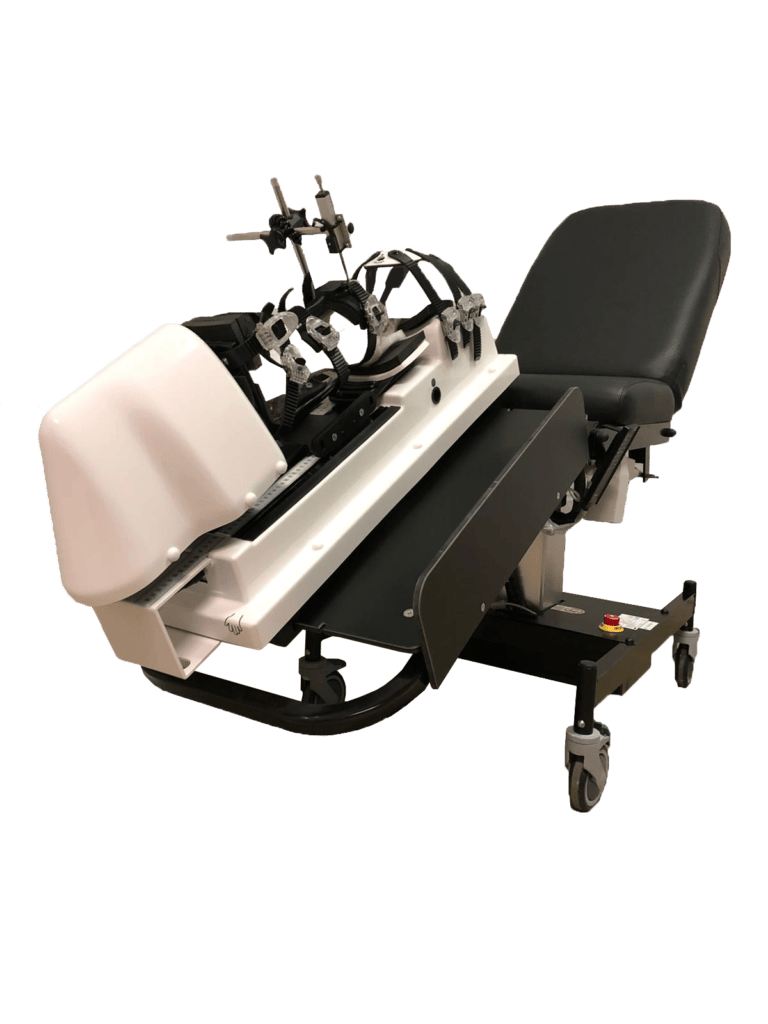

Your questions answered
Common questions
How do GNRB & Dyneelax arthrometers enhance the accuracy of knee ligament injury diagnosis?
GNRB & Dyneelax arthrometers provide quantitative measurements of knee laxity, ensuring a level of precision that is often superior to traditional methods, including MRI, especially in the case of partial ACL ruptures.
Can these arthrometers be used across different phases of rehabilitation?
Yes, GNRB & Dyneelax arthrometers are versatile and can be used for preoperative evaluation, postoperative monitoring, injury prevention, and throughout the rehabilitation process to track and optimize recovery.
How do GNRB & Dyneelax contribute to personalized rehabilitation plans?
By offering objective data on knee stability and function, these arthrometers enable healthcare professionals to tailor rehabilitation programs to the specific needs and progress of each patient.
Are GNRB & Dyneelax arthrometers suitable for use in sports medicine?
Absolutely. Sports medicine doctors can use GNRB & Dyneelax to make informed return-to-play decisions and to develop personalized injury prevention programs for athletes.
How do physical therapists benefit from using these arthrometers in rehabilitation?
Physical therapists can utilize GNRB & Dyneelax to obtain real-time feedback on knee laxity, allowing them to fine-tune and adapt rehabilitation exercises to align with a patient’s progress and needs.
Resources
To assist healthcare professionals in leveraging the GNRB & DyneeLax arthrometers to their fullest potential, we have curated a collection of resources. These are designed to provide comprehensive insights, from basic setup and operation to in-depth diagnostic procedures. These resources aim to facilitate seamless integration of these innovative tools into your diagnostic practice, ensuring accurate and timely identification of knee ligament injuries.
Research Articles & Clinical Studies:
2023 - GNRB® laximeter with magnetic resonance imaging in clinical practice for complete and partial anterior cruciate ligament tears detection: A prospective diagnostic study with arthroscopic validation on 214 patients.
DOI: 10.1016/j.knee.2023.03.017
2023 - Sensitivity, repeatability and reproducibility study with a leg prototype of a recently developed knee arthrometer: The DYNEELAX®
DOI: 10.1016/j.medntd.2023.100254
2019 - Anterior knee translation measurements after ACL reconstruction are influenced by the type of laximeter used.
DOI: 10.1007/s00167-020-05950-5
Instructional & Presentation Videos:
Click Here to view GNRB Tutorial Video
Click Here to view the DyneeLax Presentation Video
We are here to help!
We're here to assist you on your journey towards better health and precision in diagnosis. Don't hesitate to reach out with any questions or inquiries. Contact us today and let us guide you towards a healthier tomorrow.
Visit us
Bâtiment 60, Rue du Chef de Bataillon Henri Géret
53000 Laval
France
Email Us
yves.crystal@genourob.com
Call Us
+33 7 66 76 03 92 Whatsapp or Phone Call
